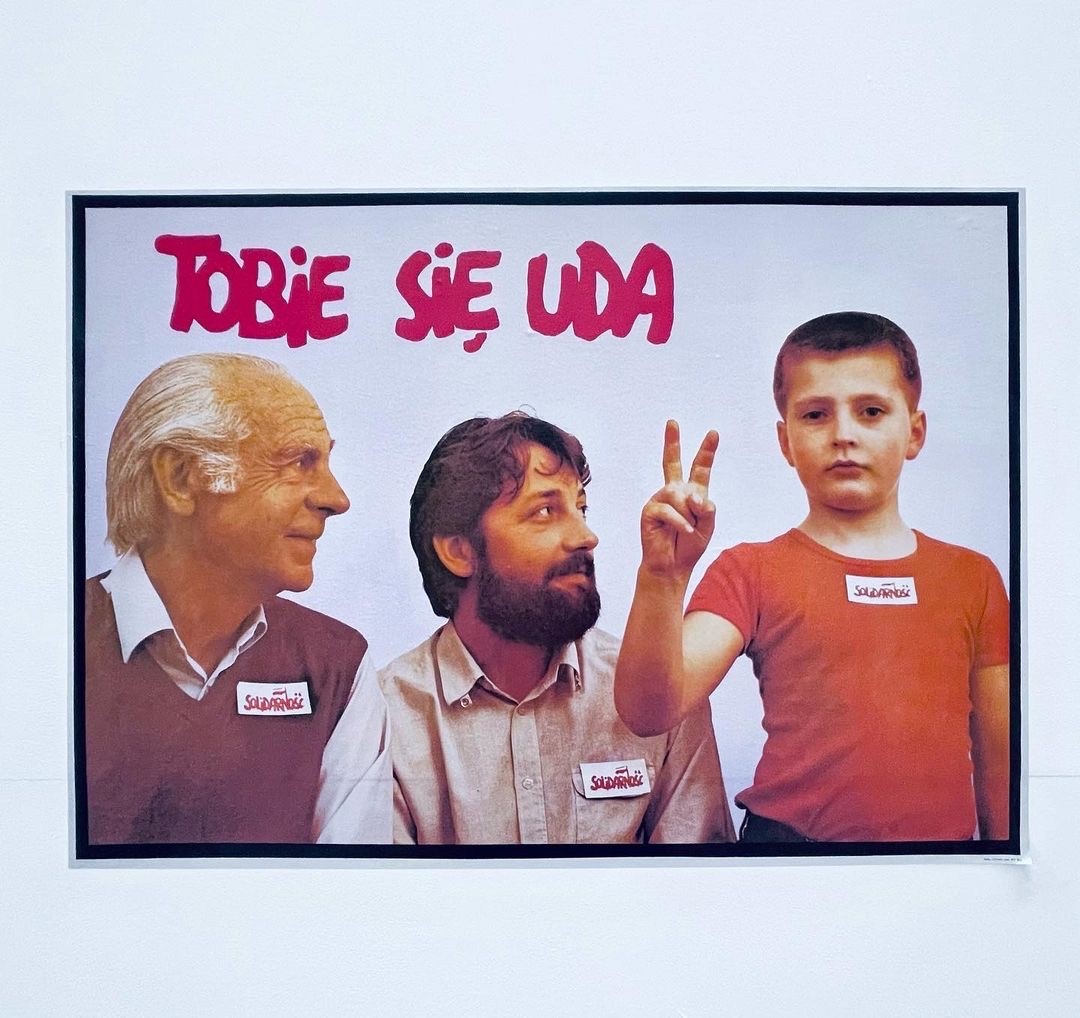Solidarity was one of the biggest social movements of the 20th century
As the leading political force opposing communism in Poland during the 1980s, it paved the way for the peaceful transition to democracy in 1989.
This exhibition explores the role that graphics played in building the movement and sustaining it during the difficult days of government repression and martial law. From its iconic logo to spontaneous poster designs and underground ephemera, Solidarity’s printed graphics created a rich visual culture of resistance that spoke to people from all walks of society.
By getting involved in making and circulating these items, often at great personal risk, many ordinary people participated in the collective and transformative work of opposition.

‘Lost Treasures of Revolution’ brings together 26 Solidarity poster designs reproduced from the collection of the Victoria and Albert Museum alongside a selection of original badges and rarely seen underground stamps that bear witness to the grassroots creative spirit of the movement in the 1980s. The exhibition concludes with a separate display of posters and graphics from current global social movements and community projects important from the English-speaking countries’ perspective. These prompt us to consider what graphic design can do in our time to build movements and foster participation and political dialogue.
Catherine Flood, the exhibition curator, says “As well as famous poster designs, we are delighted to be showing a collection of underground postage stamps and graphic ephemera that provide vivid evidence of Solidarity’s multi-dimensional appeal in the 1980s. Most of these items were produced at a grassroots community level on small underground presses by designers and ordinary citizens working with few resources to create a new democratic beginning. As issues of social inequality and alienation are thrown into sharp relief by the pandemic, it is timely to reflect on the means by which social movements can bring people together through collective action.”
The exhibition has been organised in partnership the Polish Cultural Institute in London and the Centre for Democracy and Peace Building.
Marta de Zuniga, the director of the PCI says: “We are absolutely thrilled to be able to present the highlights of the V&A poster collection as well as other graphics of Solidarity to the audience in Belfast in Northern Ireland, which are the legacy of Solidarity, the biggest and peaceful social movement in the 20th century.
The exhibition Lost Treasures of the Revolution: The Graphics of Solidarity 1980-89 continues in the foyer of the Birley Building on Belfast Campus until 12th March 2022.
